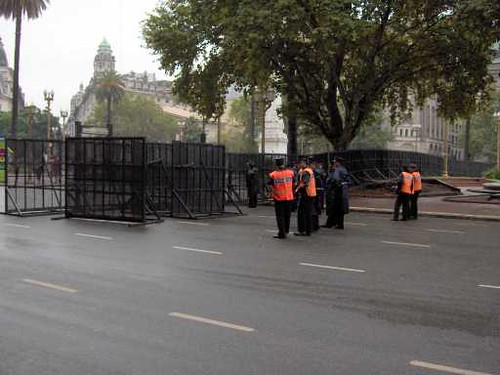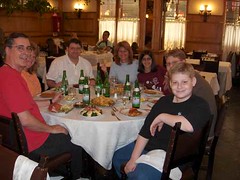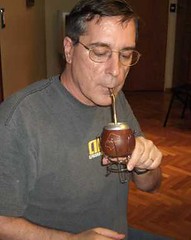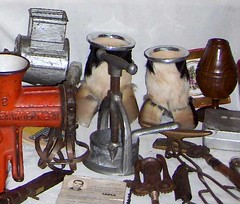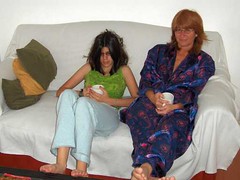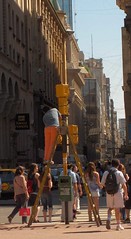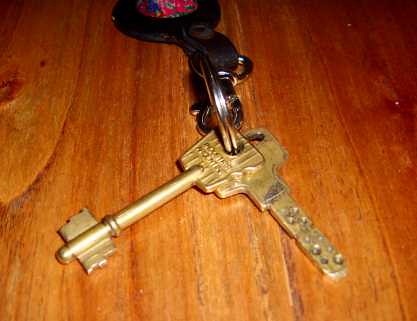These were all interesting experiences, but one thing that I’ll always remember is visiting the cemetery where Eva Peron is buried. Eve Peron was the wife of Juan Peron, who was president (some would say dictator) of Argentina 3 times, the last after having been exiled for almost 20 years in a military coup.
Evita was a powerful political figure in Argentina, though she never held any office in the government. She was hugely popular among the poor and working members of Argentine society, but was viewed with suspicion and distrust by the ruling elite. She died of uterine cancer in 1951.
Now I don’t have any particular feelings for Eva Peron, but if you ever visit Argentina, you have to visit the Recoleta cemetery. It’s found in an exclusive district of Beunos Aires, and it’s full of mausoleums, one more grandiose than the next. It’s almost as though families competed for the coolest memorial. The mausoleums are not very large usually but they’re elaborate, ranging from Gothic to contemporary. They often have two floors: a chapel on the ground floor, and a spiral staircase leading down to the coffins in the basement. I have no idea how they get the coffins down there. The doors are locked, only available to family members.
There are rows and rows of them, all constructed by important members of Argentine society back in the time when such memorials were considered status symbols. Some are in disrepair, others are meticulously maintained. When we left the cemetery, there was a festival taking place nearby, with singers, jugglers and merchants. It was nice to jostle through a crowd of living people after immersing myself in the vanity of so many dead ones.
 | 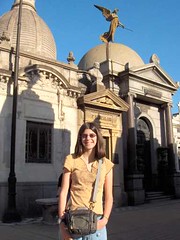 |
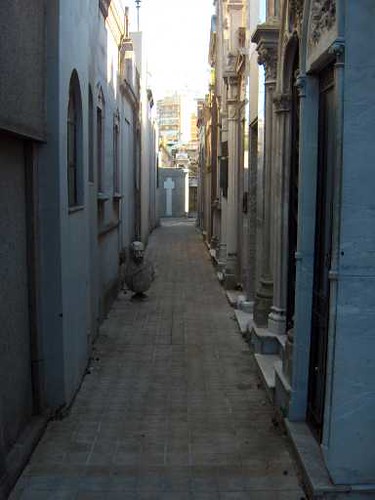 | |
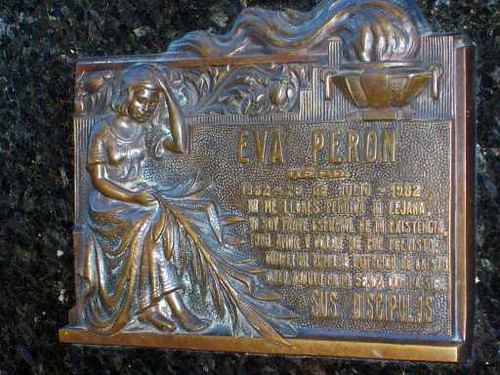 | |
It was our last day in Argentina, so we headed back to the apartment to pack and settle up with the rental agent. Norberto’s cousin drove us to the airport around 11:00 pm, but after a week in Argentina, his driving seemed almost conservative. We said our goodbyes to Norberto’s family, boarded the plane about 2:00 am and flew to Panama. It was a nighttime flight, so most people tried to sleep.
The next morning, we arrived in Panama and, in typical Norberto fashion, we were the first in line at the gate for our return flight which was direct to Orlando. When the gate agent arrived, we were told that the flight had been overbooked. Because there were 7 in our party, the gate agent asked Norberto if we would be willing to give up our seats in exchange for compensation. A glimmer appeared in Norberto’s eyes that I have never seen before. Norberto is a judge, but he’s also a lawyer, and has the killer instincts of a lawyer. Plus, the prospect of getting something for free was irresistible. Copa airline offered us $500 travel vouchers each (transferable between family members), two hotel rooms in Panama while we waited for the next available flight, a free buffet luncheon at the hotel and a bus tour of the city.
He hastily conferred with us. His cousin Alex’s oldest son was being Bar Mitzvahed in Buenos Aires in May, and Norberto wanted to come back to Argentina for the event. If we took the airline’s deal, he could do it for nothing. My wife mentioned that she would like us to visit her family in Panama, so it looked like a pretty good deal for both families. Unfortunately, it was Sunday, and there were no more flights direct to Orlando that day. Everybody had to be back to work or school on Monday. Copa offered us seats on a plane to Miami that evening, so we took it, figuring we’d rent a van and drive back to Orlando.
The airline hustled us through customs and immigration, put us on a chartered bus and drove us to the Hotel El Panama, a 5-star hotel right in downtown Panama City. The rooms were luscious and roomy, and the buffet lunch was unbelievable. Shrimps the size of cucumbers, steaks, desserts – anything you wanted. We hopped on the bus, which took us to the Panama Canal and to a dockside shopping area overlooking the city and the Pacific Ocean.
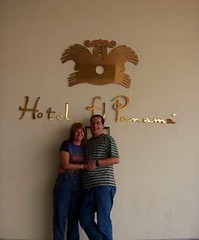
When we returned to the hotel, we showered and then headed back to the airport. I wish we could have spent the night; it was a really nice hotel. In the terminal, Norberto found out that seat assignment had not yet been made by the airline, which infuriated him. “They had all day to give us seats together, and now they tell me that all they have left are scattered all over the plane!” He engaged in a lively, half-hour debate in Spanish with the entire desk crew, eventually scoring a compromise arrangement in which he was given a seat in Business Class, the kids and the women were seated together, and I had a seat by myself.
Unfortunately, shortly after we took off, Norberto was told that because of the last-minute arrangements, they didn’t have enough Business Class meals to serve him. He would have to eat coach food. You can imagine the volcanic stream of invective that spewed from him at this indignity, but the flight crew was helpless.
When we arrived in Miami, it was about 10:00 pm. Norberto had called ahead and reserved a 15-passenger van the size of the Starship Enterprise, and once we got on the highway, people started to nod off. Norberto was driving at his usual suicidal clip, so I insisted that I take over the wheel. The drive was long and boring, and everyone in the car was sleeping sitting up, their heads rocking back and forth like bobble-head dolls. After the visit to the cemetery, I felt like the driver of a hearse. Eventually, we made it safely home at about 4:00 a.m. Monday morning, about 14 hours behind our original schedule. By now we hadn’t been in a real bed for 42 hours. Aside from the long, deathmarch ending, it was an extraordinary trip, full of memorable moments. I’d like to do it again sometime, after I catch up on my sleep.
